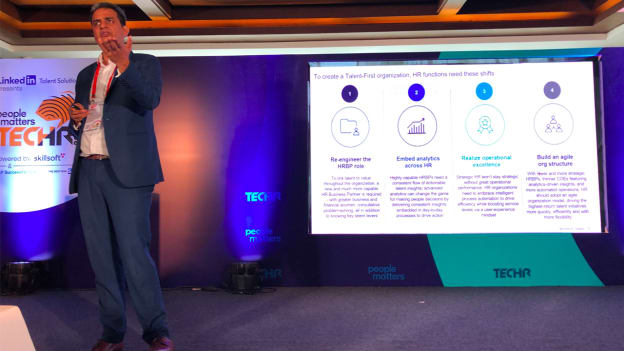The reskilled HR Team: How to make the HR Team future-ready

One of the most important developments that resulted in the modern workplace of today is the ability of different people to come together as an organization and deliver value. However, the entire paradigm of an organization, and by that effect, its structure, is rapidly changing. What do these changes mean for CHROs and HR? How can we make the HR team future-ready?
Impact on traditional business models
In today’s VUCA world, rapidly changing business operations require quick responses. In addition to the complex global interdependencies, the rise of the millennial customers, increasing digitization, and the emergence of a new labor market have disrupted traditional business models and driven innovation at break-neck speed. For organizations and HR leaders, this has translated into a war of talent, which has necessitated a shift in the skills we seek and develop.
HR leaders 3.0: Strategically linking talent to value
The role of HR has come a long way from being that of union-focused negotiator personnel to a business partner that drives efficiency and nurtures talent. However, this role is set to evolve again as new-age HR leaders need to harness new capabilities and technology to consistently provide value-driving talent insight with improved efficiency by strategically linking talent to business value. Thus, CHROs and HR leaders need to work closely in tandem with CEOs and CFOs to ensure that organizations are equipped with the necessary skills to drive the value agenda by developing a talent-first HR.
Identifying top talent
A talent-first organization enables organizations to identify the critical talent that generates the maximum value and has the maximum impact of success. This critical talent can be anywhere in the organizational hierarchy, and leaders need to systematically address them by understanding the value agenda, identifying the most critical roles, getting the right talent in these roles, and mobilizing the talent. The challenge, however, to designing a talent-first organization is that despite being ranked as a top priority, only 33 percent of CEOs are confident in HR’s ability to deliver and only 12 percent agree that if needed, HR Business Partners could lead the business, they are supporting.
How to design a talent-first organization?
- Re-engineer the HRBP role: A much more capable HR Business Partner, with greater business and financial acumen, consultative problem-solving, and knowledge of crucial talent levers, is required. The role needs to be re-engineered from that of ‘HR Business Partner’ to ‘Talent Value Leader.’
- Embed analytics across HR: To create a consistent flow of actionable and consistent talent insights, advanced analytics needs to be embedded in day-to-day processes. Analytics needs to be used in recruitment, training, engagement, and retention to link the talent strategy to business needs.
- Realize operational excellence: Organizations need to embrace intelligent process automation to drive efficiency while boosting service levels via a user-experience mindset. However, organizations need to be mindful of the automation effort, effect, and utility of technology to derive sustainable impact from automation.
- Build an agile organization structure: HR needs to design an agile flow-to-work organization model which drives the highest-return talent initiatives more quickly, efficiently, and with more flexibility.
Moving from ‘Traditional HR’ to ‘Agile HR’
Moving to agile HR demands that we adopt new mindsets and develop new capabilities; thus, replacing top-down command with distributed autonomy and self-regulation and making way for rapid cycles of experimentation and learning instead of rigid and long-planning cycles. This also includes facilitating a free flow of information across the organization, moving beyond a compliance-focused role to understand what employees need, and building result-oriented processes that focus on generating impact and value. The nature of work is changing, the workers are changing, and so, the workplace has to change as well.
(This article is based on the Masterclass ‘The reskilled HR Team: How to make the HR team future-ready’ by Anant Kasibhatla, Organisation Practice Expert, McKinsey & Company, at TechHR 2019.)














